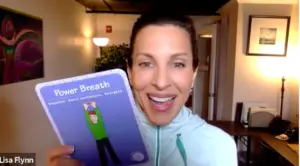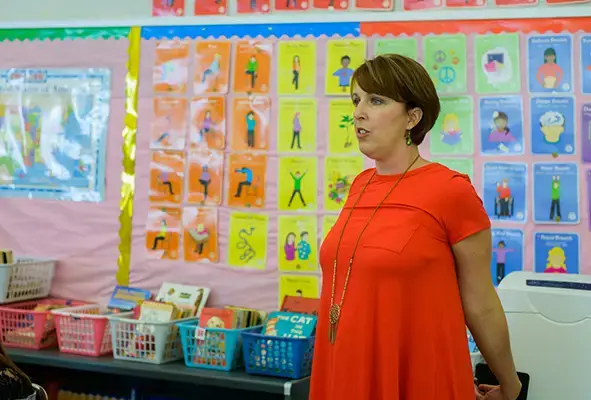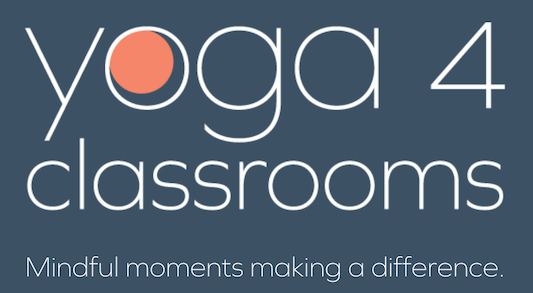
|
Check out our brand new product-- Yoga 4 Classrooms Tee! Wear Your Mindfulness With Pride!
|

Let’s hear from Melissa Hamberg, a Licensed Clinical Professional Counselor in Maryland. Melissa works in a special education school and a residential treatment facility for children with trauma histories. She has worked in the mental health field for 25+ years as a therapist, supervisor, crisis and trauma-informed care trainer, and crisis support specialist. She has a passion for working with this population and truly loves helping them along their therapeutic journey.
I work in a non-public, special education school that serves students in kindergarten through 8th grade. All of the students here have individual education plans, IEPs, and most have trauma histories resulting in behavioral and emotional challenges. Due to the intense needs of our students, we practice trauma-informed care, and serve the “whole child.” This means that we meet, not only the academic needs of our students but their emotional needs as well. In order to do this, we use alternative and creative therapies and practices. One of these practices is the use of yoga and meditation. In the past, we have offered yoga groups during our positive behavioral interventions and supports, PBIS, group day. The yoga group was kid-friendly and used the Yoga 4 Classroom Activity cards to make it fun. Now we use the yoga poses as part of our sensory walk in the hallways. We post pictures of the different yoga poses that students can use when they need a brain break, stretch break, stress break, or just for fun while walking in the hall. The students like seeing the pictures and trying new poses. They also like it when staff join in and do the poses with them. The sensory walk can be a good distraction when a student is struggling or just needs some time away.
We also try to teach children meditation techniques, using more kid-friendly and easy-to-understand language. We accomplish this by teaching breathing techniques, like the ones taught on the activity cards. The kid-friendly language and visualizations make these lessons fun and teaches these skills in ways that the students can understand and remember. When they learn them when they are feeling safe, they can then access them when they are in crisis or experiencing emotional dysregulation. We can use the language they use on the cards, like “take a balloon breath” and the students understand what that phrase means. We practice the skills with them, so we are role modeling the skill and doing it with them as partners. This helps build healthy relationships between staff and students and creates a stronger team and a more lasting learning experience.
We love to hear how Yoga 4 Classrooms is making a difference in the lives of students. Thank you Melissa for the work you do every day to serve your students! We would love to hear how you are using Yoga 4 Classrooms at your school, too. Contact us and share your story!
| Cookie | Duration | Description |
|---|---|---|
| cookielawinfo-checkbox-analytics | 11 months | This cookie is set by GDPR Cookie Consent plugin. The cookie is used to store the user consent for the cookies in the category "Analytics". |
| cookielawinfo-checkbox-functional | 11 months | The cookie is set by GDPR cookie consent to record the user consent for the cookies in the category "Functional". |
| cookielawinfo-checkbox-necessary | 11 months | This cookie is set by GDPR Cookie Consent plugin. The cookies is used to store the user consent for the cookies in the category "Necessary". |
| cookielawinfo-checkbox-others | 11 months | This cookie is set by GDPR Cookie Consent plugin. The cookie is used to store the user consent for the cookies in the category "Other. |
| cookielawinfo-checkbox-performance | 11 months | This cookie is set by GDPR Cookie Consent plugin. The cookie is used to store the user consent for the cookies in the category "Performance". |
| viewed_cookie_policy | 11 months | The cookie is set by the GDPR Cookie Consent plugin and is used to store whether or not user has consented to the use of cookies. It does not store any personal data. |

Sign up for our newsletter to get mindfulness tips, classroom tools, and exclusive offers—delivered straight to your inbox.
✨ Join now and get 10% off your first order! ✨